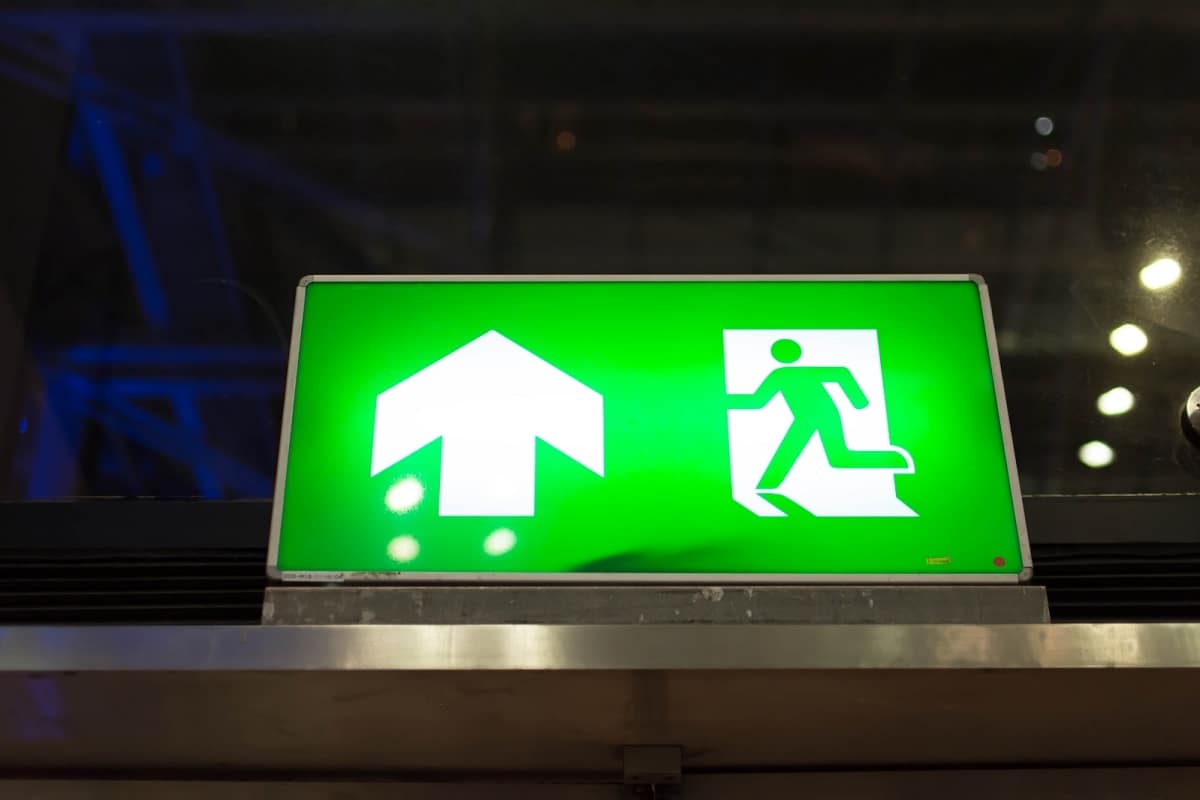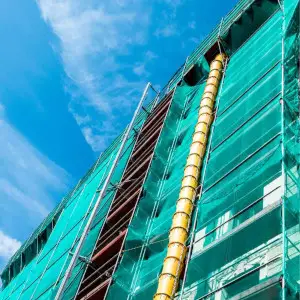The speed of technology and innovation has made it possible to explore better ways to escaping life-threatening fires.
Fire escape chutes and slides are some of the better fire escape methods. These options are more efficient and cost-effective than fire escape ladders, which have dominated the fire escape equipment market for a long time.
Today, we will explore what fire escape chutes and slides are and discuss both options’ benefits and drawbacks.
Fire Escape Chutes
Fire escape chutes are built for only one purpose, to assist people to evacuate from a building in emergencies such as fires or earthquakes. They are made of fabric that slows the occupant down through friction.
These chutes are mostly installed in buildings where having a fire escape ladder is not practical due to the property’s architecture. For example, taller buildings greater than three or four stories are not well suited for fire escape ladders. This is because it will take a lot longer for people to exit a building using a ladder than a chute, which will deliver them safely to the ground within seconds.
Using a fire escape chute is easy as well. Just drop into the chute from an access point on the floor you are on, and the chute will do the rest. Before you know it, you will be safely on the ground.
Fire Escape Slides
A fire escape slide is similar to a fire escape chute. The differences are the design — a slide is angled rather than vertical — and the use of metal and plastic on slides vs. fabric for chutes.

Stainless steel fire escape slides are much more durable than their plastic counterparts. They are also weather-resistant, ensuring they will function safely after years of exposure to sun, ran and snow.
Inflatable fire escape slides can be purchased for home or business use. These are easily stored under a bed or in a closet or locker.
Inflatable fire escape slides are also used on aircraft to evacuate passengers from the plane quickly.
Two things to keep in mind when considering a fire escape slide over a chute:
- You need considerably more space outside the building to deploy a slide because the slide is slanted at an angle to make the descent smooth and safe. In comparison, escape chutes are vertical and do not need much room to deploy.
- Slides only work up to 3-4 stories or so. Above that the slide becomes so long that it’s impractical to install and deploy.
What are the Different Types of Fire Escape Chutes?
The design of a safe fire escape chute depends on the country you install it in.
The most common design is a chute with a combination of three different fabric layers. The outer layer is fire and tear-proof, whereas the inner layers are flexible and heat resistant to allow for a safe escape while protecting from friction burns. This design is mostly used in Sweden.
Australia and Korea have designed their chutes with a flexible ring to keep the escapee tucked in for a slow descent.
German chutes are unique as they feature a spiral slide inside the chute.
In the United States chutes are see-through and made with a Nylon net set at an angle.
What are the Different Types of Fire Escape Slides?
The geometry of most fire escape slides is the same. A fully enclosed and angled tunnel or U-shaped channel mounted to the side of the building (or inside a window in the case of an inflatable slide).
The major difference is the material used to construct these slides. Stainless steel is used commonly since it is durable and long-lasting, especially for taller buildings.
Other options are inflatable slides made of heavy fire resistant rubber or nylon material with a slick outer coating. These can be inflated within a few seconds to evacuate the building.
In some cases, people also construct slides using concrete. These are rare because they break down in the weather and become unsafe, on top of taking a lot of time and materials to build.
Pros and Cons of Fire Escape Chutes
Pros
- Significantly lower cost compared to fire escape ladders.
- Instant descent in case a fire breaks out.
- No maintenance required.
- Easy to use
- It does not take a lot of space.
- No structural compromises needed for installation.
Cons
- Limit on how many people can use it at a time.
- The fabric may deteriorate over time.
Pros and Cons of Fire Escape Slides
Pros
- Faster escape route than a fire staircase or ladder but slower than a fire escape chute.
- Easy to use
- Stainless steel slides have a long life.
- The shape of the slide can be tailored according to your needs.
- Can easily evacuate children and the elderly
Cons
- More expensive than a fire escape chute.
- It may take longer to evacuate a building with a slide.
- Structural compromises might be needed for installation.
Wrapping Up
Both fire escape chutes and slides are effective options if you want to incorporate fire safety into a building or home. To make your choice easier, you need to evaluate your own needs. If you are looking for durability, then a stainless-steel slide is the best option.
On the other hand, if you want a fire safety escape and cannot make structural compromises, then a fire escape chute is the way to go.

